A Salvaged Banksy Mural is Now on View in NYC
This unique Banksy mural goes up for auction on May 21st in NYC!


Have you ever wondered what happens to New York City’s subway cars after they are taken out of service? From 2001 to 2010, the Metropolitan Transit Authority (MTA), dropped 2,580 cars into the Atlantic Ocean, off the coasts of New Jersey, Delaware, Maryland, Virginia, South Carolina, and Georgia, to become artificial reefs. This incredible process, which began in the 207th Street Overhaul Shop in Inwood, Manhattan, was documented over the course of two years by photographer Stephen Mallon. Starting Wednesday, the public can see nineteen of his large-format photographs on display at the New York Transit Museum’s Grand Central Gallery in the exhibit: “Sea Train: Subway Reef Photos by Stephen Mallon.”
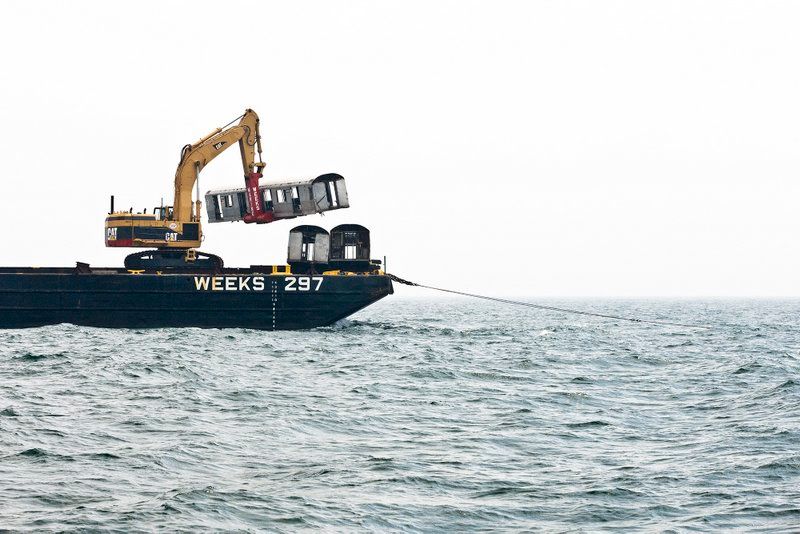
The End, 2008. Photo by Stephen Mallon.
Many of Mallon’s photographs in this series will be exhibited for the first time, capturing, as the Transit Museum eloquently states, “the seemingly impossible: iconic subway cars dropped like toys by brightly-colored cranes off hulking barges. As they are deployed to become artificial reefs, these symbols of industry and city life, which carried millions of passengers along New York City’s iron rails for decades, appear shrunken in scale against the vastness of the Atlantic seascape.” Mallon, whose work has been published in The New York Times, National Geographic, Vanity Fair, and The Wall Street Journal calls the subway reef series one of his all-time favorite subjects. The Transit Museum has shared these photographs by Mallon and others on Untapped Cities as a preview for the exhibit.
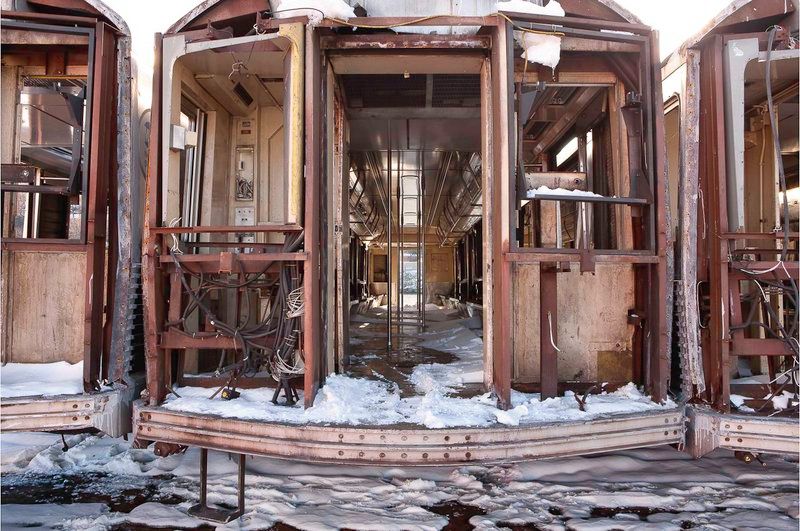 Transfer, 2009. Photo by Stephen Mallon.
Transfer, 2009. Photo by Stephen Mallon.
Artificial reefing, or underwater habitats formed around sunken manmade objects, is a long-time marine practice. The first planned artificial reefs were boats in the early nineteenth century. Throughout the twentieth century, objects like school buses, refrigerators, have all been transformed into reefs. In 2017, the New York City Department of Environmental Protection placed 5,000 crushed porcelain toilets from New York City school buildings into Jamaica Bay to build an oyster reef. All artificial reefs are created following strict protocols enforced by the U.S. Environmental Protection Agency. From the 207th Street Overhaul Shop, the subway car shells get barged from the Harlem River to their final resting places off the Atlantic coast.
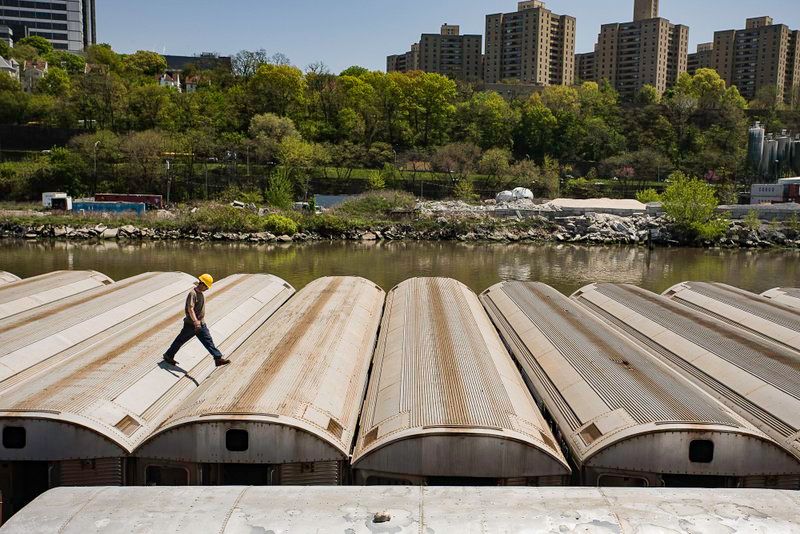
Abbey Road, 2008. Photo by Stephen Mallon.
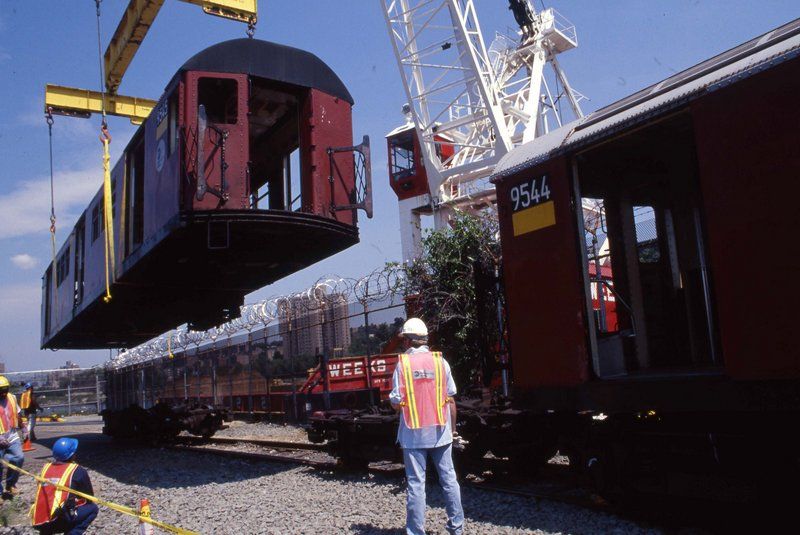
Redbird Reefing, 2001. Photo courtesy New York Transit Museum
The initial impetus for the reefing program was spurred by the mass deaccessioning of “Redbird” cars in 2000, followed by the “B-Division/Brightliner” cars. From 2001 to 2003, 1,269 carbon steel Redbird cars were cleaned, stripped to the shell, repurposed and reefed, and from 2008 to 2010, 1,311 of the stainless steel “B-Division/Brightliner” cars hit the ocean floor. The reefing program came to a close on Earth Day in 2010, and it is unlikely we will see another such project from the MTA in quite some time. According to the New York Transit Museum, “while the program proved cost-effective for decommissioning large fleets all at once, it may not be as efficient going forward given New York City Transit’s current standard of decommissioning only a few cars at a time.”
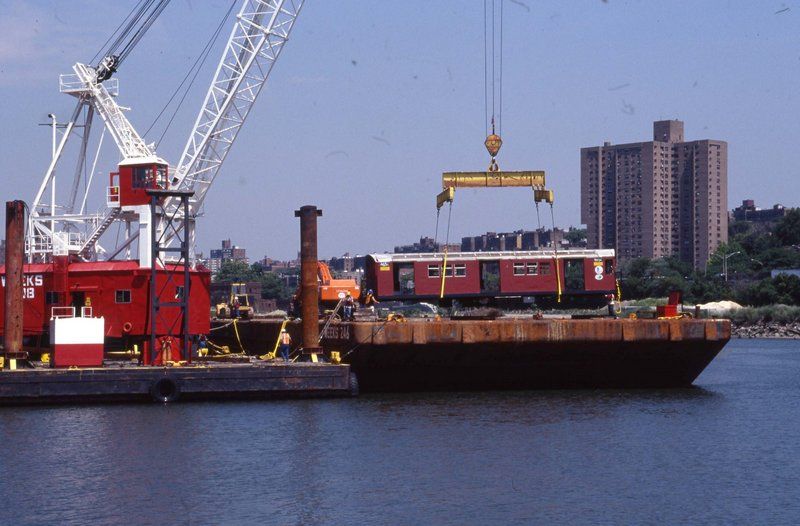
Redbird Reefing, 2001. Photo courtesy New York Transit Museum
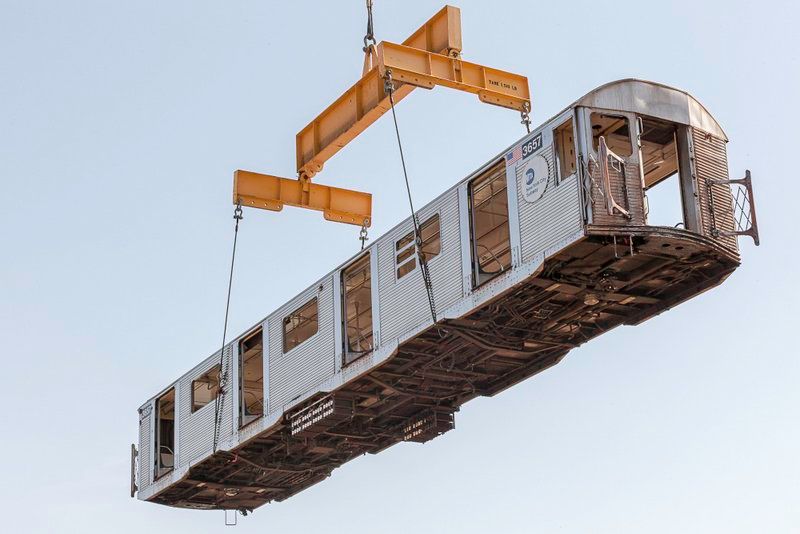
Mind the Gap, 2008. Photo by Stephen Mallon.
The impact has been substantial however, creating miles of artificial reefs stretching from New Jersey to Georgia, increasing the habitat for spawning and growing fish, improving marine environments, and offering a boon to the divers and anglers in local coastal communities. Species that flourished included sea bass, tuna, mackerel, flounder, blue mussels, sponges, barnacle, and coral. From the agency perspective, the
MTA was able to save $30 million in car disposal costs.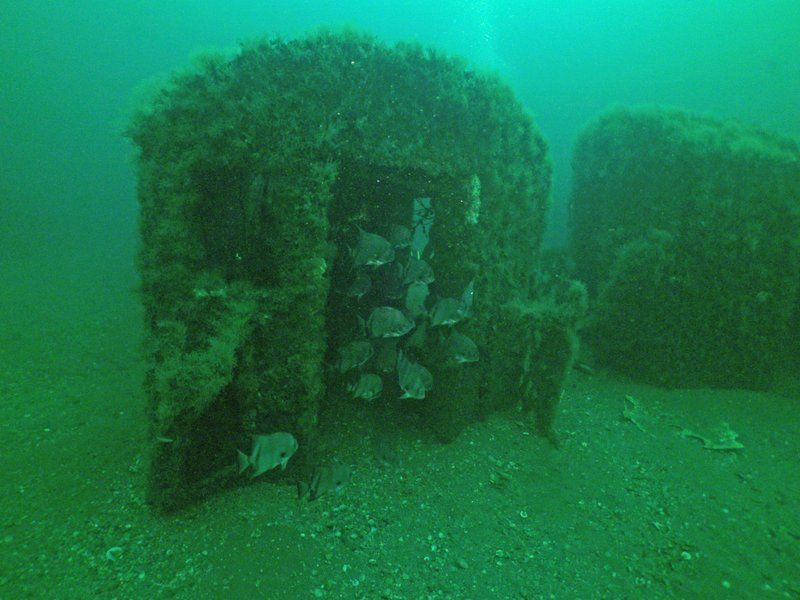
Redbird reef. Photo by Robert Martore, Courtesy of South Carolina Department of Natural Resources.
Stephen Mallon’s photographs are both haunting and architectural, bringing us to places in our backyard and hundreds of miles away, on the ground, and miles at sea. As Amy Hausmann, the Museum’s Senior Curator and Deputy Director for Collections and Exhibitions says, “Mallon sees these familiar subway cars and highlights the beauty of their design, the patina of their metal bodies, and the intricacies of their engineering. His work is abstract in many instances, and it is only when we see these stripped-down machines juxtaposed against the sweep of the Atlantic Ocean that we understand he is celebrating both their past and their future as a new home to thriving marine life.”
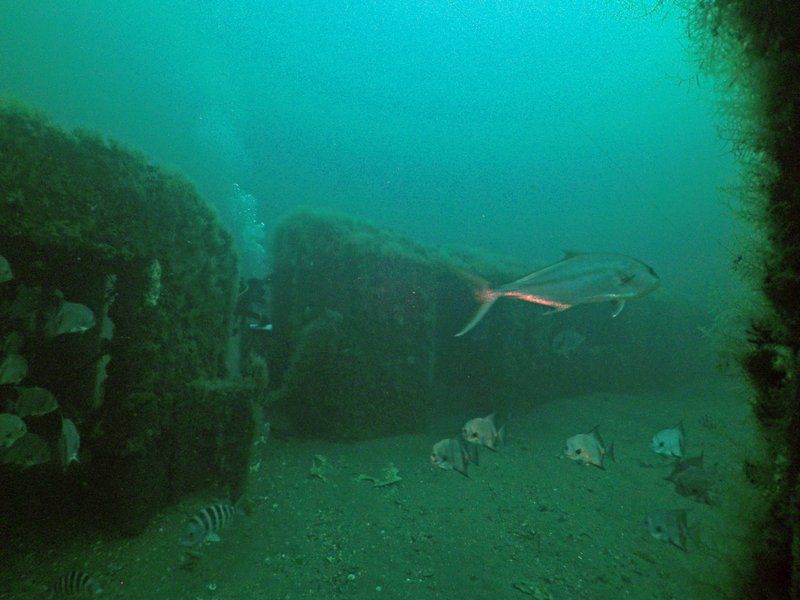
Redbird reef. Photo by Robert Martore, Courtesy of South Carolina Department of Natural Resources.
Sea Train: Subway Reef Photos by Stephen Mallon opens to the public on Wednesday, March 20th at the New York Transit Museum Gallery & Store at Grand Central Terminal. The Museum’s Gallery & Store are open Monday through Friday, 8am to 8pm; Saturday and Sunday, 10am to 7pm; and is closed on major holidays and for special events. It is located in the shuttle passage on 42nd Street and Park Avenue, adjacent to the Station Master’s Office, and is free to the public year-round.
Next, check out The Top 10 Secrets of the NYC Subway and discover the secrets of Grand Central Terminal on your visit to the exhibition.
Subscribe to our newsletter